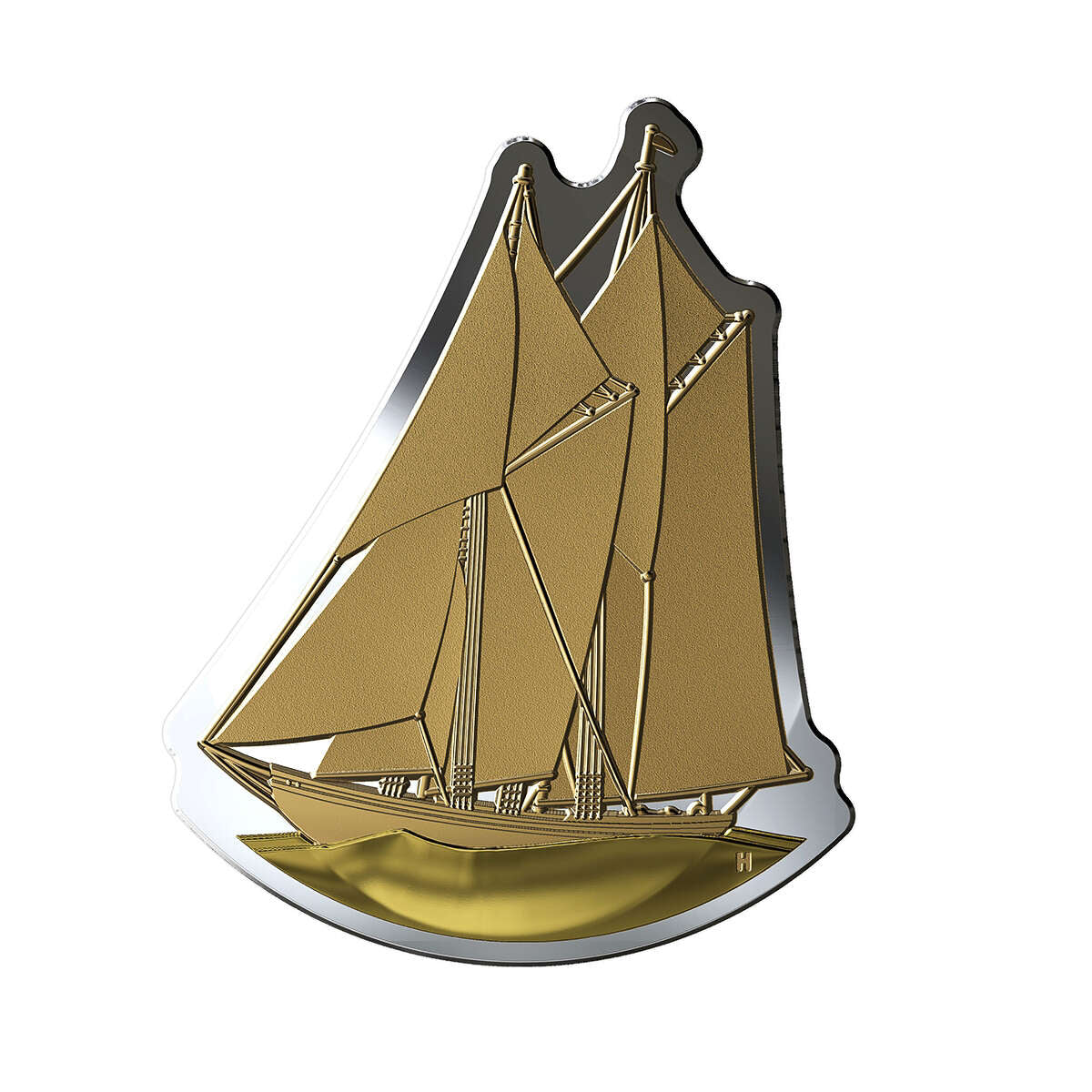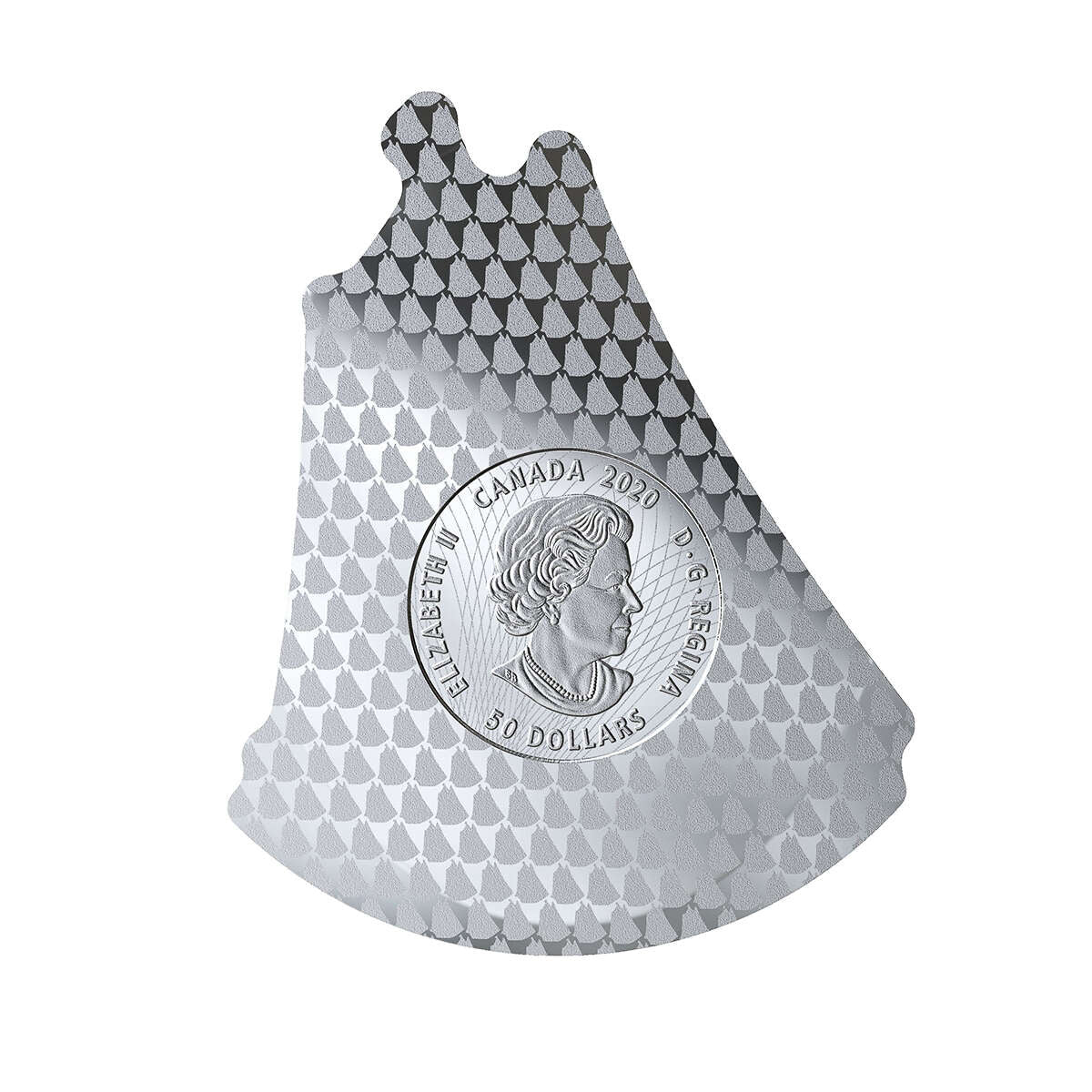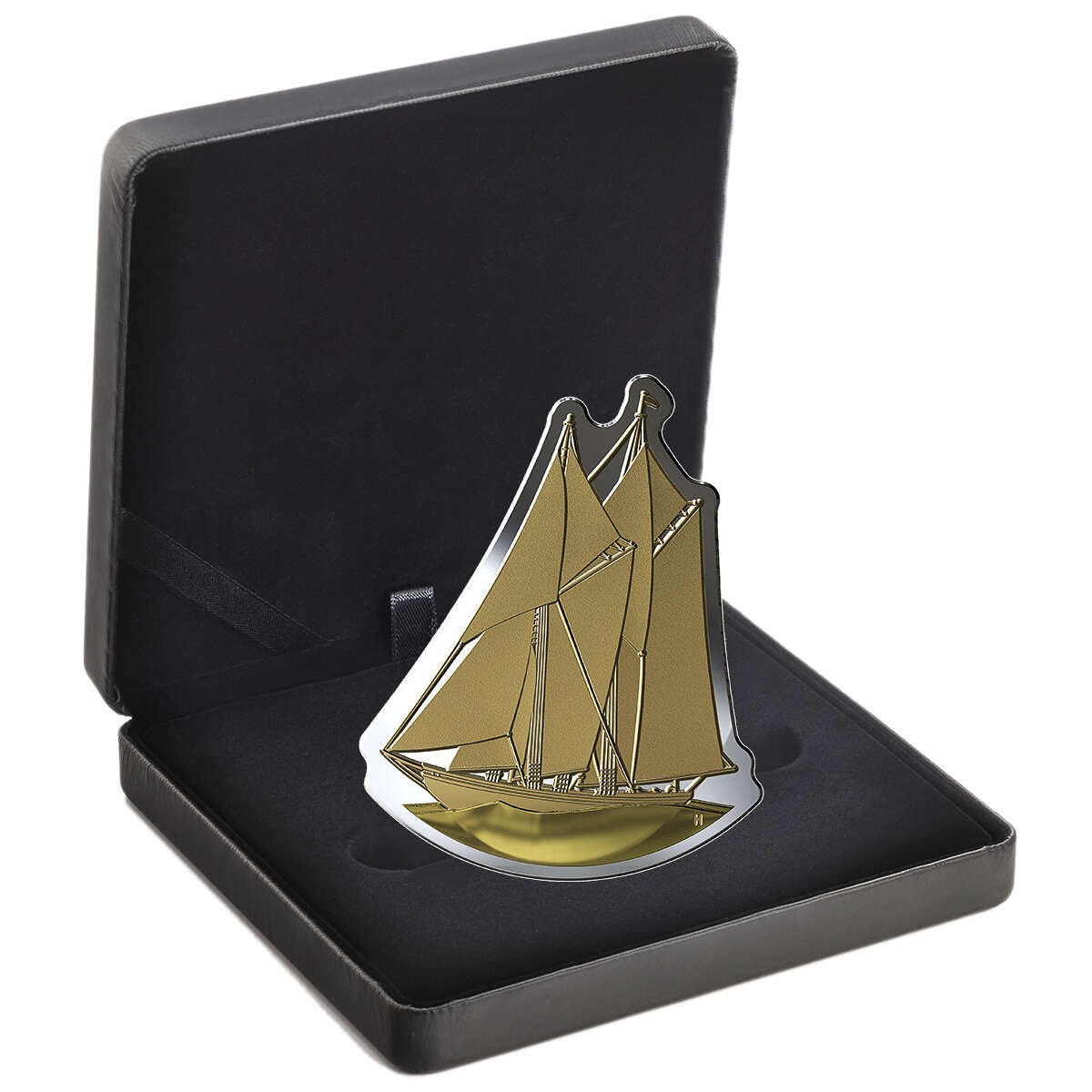Description
Famed sculptor Emanuel Hahn’s iconic image of the Bluenose Schooner is lifted out of the circular field of Canada’s 10-cent piece and granted the freedom to sail on its own. The coin is dated 2020 with a $50 denomination and weighs 100 grams (over three ounces) of pure silver. Adding to its collectability, the mintage is extremely limited to just 1,200. HST/GST exempt.
The Design:
When the original Bluenose fishing and racing schooner was completed in 1921, it was intended both to serve as a working fishing boat based in Nova Scotia and as a sleek racing yacht. Through its 25 year working life the Bluenose remained undefeated through numerous races against American and Canadian competitors. Quickly becoming a symbol of Canadian excellence and achievement, the Bluenose was adopted as the main design for Canada’s dime in 1937. It has also appeared on several Canadian postage stamps and on Nova Scotia’s license plates. The obverse of this Bluenose shaped coin features the effigy of Her Majesty Queen Elizabeth II by Susanna Blunt and a pattern of Bluenose silhouettes.
Did You Know?
That the reverse design of the Canadian dime has changed only three times since its 1937 launch: during Canada’s centennial in 1967, when it temporarily featured Alex Colville’s mackerel fish design; in 2001, to honour the United Nations’ International Year of the Volunteer; and, in 2017, to celebrate Canada 150.
Did You Know?
That the reverse design of the Canadian dime has changed only three times since its 1937 launch: during Canada’s centennial in 1967, when it temporarily featured Alex Colville’s mackerel fish design; in 2001, to honour the United Nations’ International Year of the Volunteer; and, in 2017, to celebrate Canada 150.





